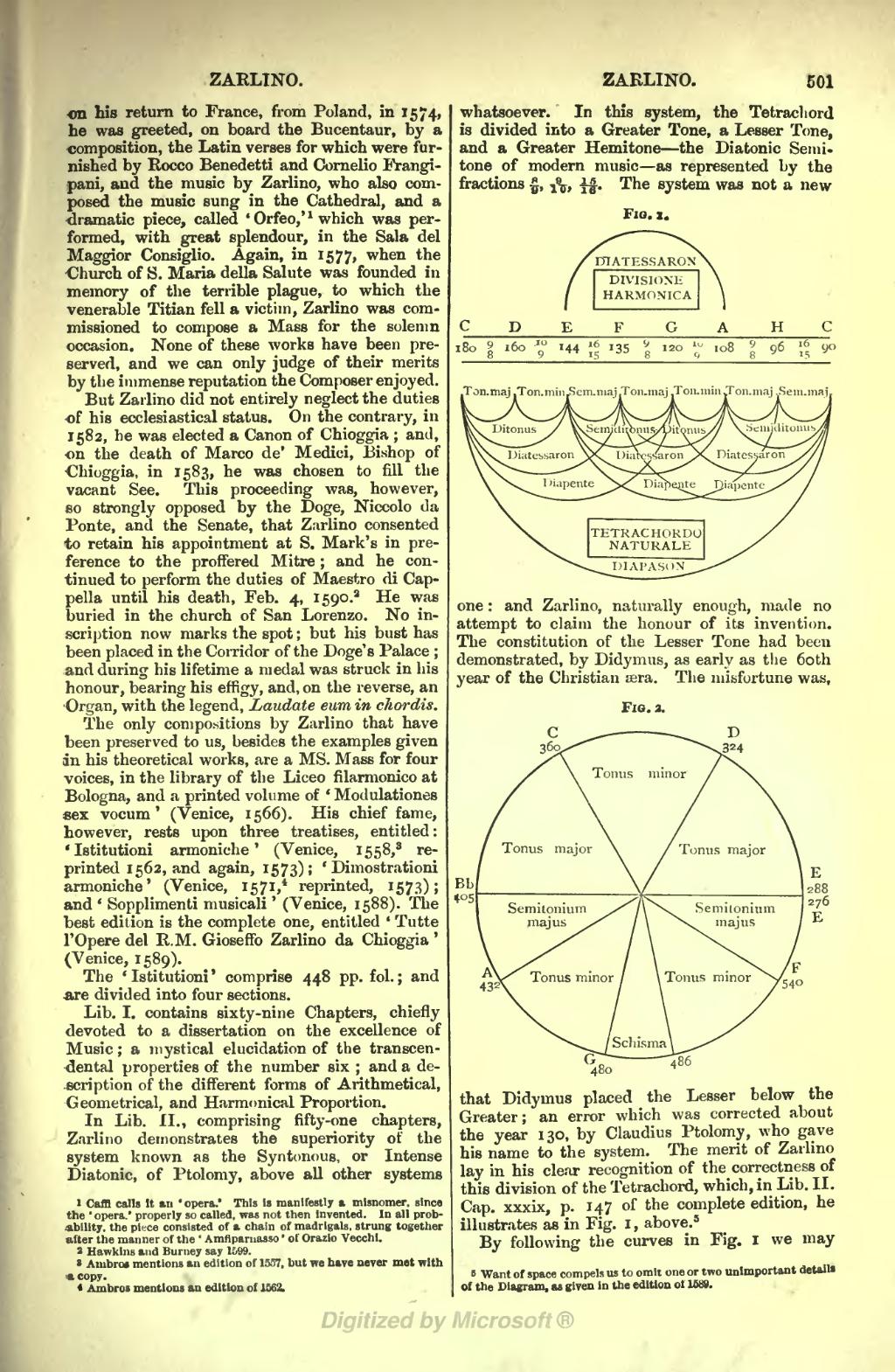on his return to France, from Poland, in 1574, he was greeted, on board the Bucentaur, by a composition, the Latin verses for which were furnished by Rocco Benedetti and Cornelio Frangipani, and the music by Zarlino, who also composed the music sung in the Cathedral, and a dramatic piece, called 'Orfeo,'[1] which was performed, with great splendour, in the Sala del Maggior Consiglio. Again, in 1577, when the Church of S. Maria della Salute was founded in memory of the terrible plague, to which the venerable Titian fell a victim, Zarlino was commissioned to compose a Mass for the solemn occasion. None of these works have been preserved, and we can only judge of their merits by the immense reputation the Composer enjoyed.
But Zarlino did not entirely neglect the duties of his ecclesiastical status. On the contrary, in 1582, he was elected a Canon of Chioggia; and, on the death of Marco de' Medici, Bishop of hioggia, in 1583, he was chosen to fill the vacant See. This proceeding was, however, so strongly opposed by the Doge, Niccolo da Ponte, and the Senate, that Zarlino consented to retain his appointment at S. Mark's in preference to the proffered Mitre; and he continued to perform the duties of Maestro di Cappella until his death, Feb. 4, 1590.[2] He was buried in the church of San Lorenzo. No inscription now marks the spot; but his bust has been placed in the Corridor of the Doge's Palace; and during his lifetime a medal was struck in his honour, bearing his effigy, and, on the reverse, an Organ, with the legend, Laudate eum in chordis.
The only compositions by Zarlino that have been preserved to us, besides the examples given in his theoretical works, are a MS. Mass for four voices, in the library of the Liceo filarmonico at Bologna, and a printed volume of 'Modulationes sex vocum' (Venice, 1566). His chief fame, however, rests upon three treatises, entitled: 'Istitutioni armoniche' (Venice, 1558,[3] reprinted 1562, and again, 1573); 'Dimostrationi armoniche' (Venice, 1571,[4] reprinted, 1573); and 'Sopplimenti musicali' (Venice, 1588). The best edition is the complete one, entitled 'Tutte l'Opere del R. M. Gioseffo Zarlino da Chioggia' (Venice, 1589).
The 'Istitutioni' comprise 448 pp. fol.; and axe divided into four sections.
Lib. I. contains sixty-nine Chapters, chiefly devoted to a dissertation on the excellence of Music; a mystical elucidation of the transcendental properties of the number six; and a description of the different forms of Arithmetical, Geometrical, and Harmonical Proportion.
In Lib. II., comprising fifty-one chapters, Zarlino demonstrates the superiority of the system known as the Syntonous, or Intense Diatonic, of Ptolomy, above all other systems whatsoever. In this system, the Tetrachord is divided into a Greater Tone, a Lesser Tone, and a Greater Hemitone—the Diatonic Semitone of modern music as represented by the fractions, 8⁄9, 9⁄10, 15⁄16.

The system was not a new one: and Zarlino, naturally enough, made no attempt to claim the honour of its invention. The constitution of the Lesser Tone had been demonstrated, by Didymus, as early as the 6oth year of the Christian aera. The misfortune was, that Didymus placed the Lesser below the Greater; an error which was corrected about the year 130, by Claudius Ptolomy, who gave his name to the system. The merit of Zarlino lay in his clear recognition of the correctness of this division of the Tetrachord, which, in Lib. II. Cap. xxxix, p. 147 of the complete edition, he illustrates as in Fig. 1, above.[5]

By following the curves in Fig. 1 we may
- ↑ Caffi calls it an 'opera.' This is manifestly a misnomer, since the 'opera,' properly so called, was not then invented. In all probability, the piece consisted of a chain of madrigals, strung together after the manner of the 'Amfiparnasso' of Orazio Vecchi.
- ↑ Hawkins and Burney say 1599.
- ↑ Ambros mentions an edition of 1557, but we have never met with a copy.
- ↑ Ambros mentions an edition of 1562.
- ↑ Want of space compels us to omit one or two unimportant details of the Diagram, as given in the edition oi 1589.

